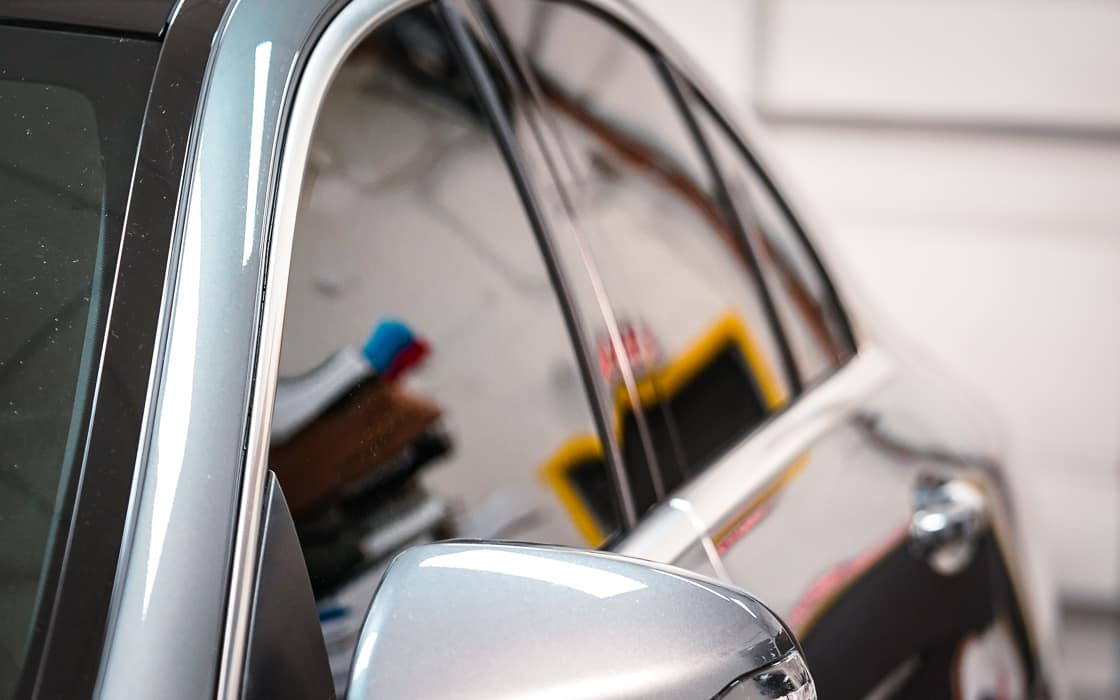A Comprehensive Overview of Automobile Home Window Tinting: Setup Refine
Browsing the process of auto window tinting can be a precise undertaking that calls for attention to information and a methodical method. Let's discover the intricacies of automobile home window tinting setup to discover the subtleties that make all the distinction in the final product.
Necessary Products for Tinting
To successfully tint auto home windows, it is vital to collect the essential products for the installation process. The key product needed is the window tint movie itself. This film is available in different shades and levels of protection, so it is critical to pick one that follows local guidelines and meets individual preferences. In addition to the color film, a heat gun is necessary to help mold the film to the curvature of the home windows for a smooth coating.
Furthermore, a squeegee is important for getting rid of air bubbles and ensuring a smooth application of the color. It is suggested to utilize a high-grade squeegee to stop any kind of scrapes on the film during the installation process. Additionally, a sharp utility blade is crucial for trimming the excess tint film along the edges of the home windows neatly.
Last but not least, a spray container full of a soapy water solution aids in the application procedure by permitting the tint to be rearranged before it establishes permanently. By having these products ready, the cars and truck home window tinting installment process can be performed effectively and successfully.
Preparing the Car Windows
Before launching the vehicle home window tinting procedure, guaranteeing the sanitation and dry skin of the home windows is paramount to accomplish a perfect application. Any type of particles, dust, or dirt present on the windows can disrupt the color bond, causing a low-grade outcome. To prepare the auto windows adequately, start by washing them with a mild detergent or glass cleaner to remove any surface area crud. Utilize a microfiber towel to dry out the windows completely, ensuring there are no streaks or water areas left behind. Evaluate the windows carefully to recognize any type of stubborn residues that might call for additional cleansing. For optimal results, take into consideration making use of a glass gloss to remove any stubborn impurities that normal cleaning may not eliminate. As soon as the windows are tidy and completely dry, continue with caution to the following steps of the tinting procedure, maintaining a clean environment to prevent any type of particles from jeopardizing the final outcome.
Using the Home Window Tint Movie
Guaranteeing that the car windows are impeccably clean and dry, the next action in the vehicle window tinting process involves precision and care in great post to read using the window tint film. This critical point calls for precise attention to detail to achieve a perfect and resilient tint job. The window tint film is carefully determined and cut to fit each certain window of the lorry precisely.
Prior to using the film, the installer sprays a remedy on the home window to act as a lubricant, permitting appropriate positioning of the color. The film is after that carefully positioned on the within the window, making certain that it sticks efficiently and uniformly without any type of folds or air bubbles. A squeegee is used to eliminate any excess solution and to strongly push the color onto the glass.
When the color movie is securely in place, the installer checks for any flaws, ensuring that the edges are effectively secured (Window Tinting Rosenberg). The car is after that delegated dry, permitting the glue to bond completely with the window for a seamless and professional coating
Drying and Finishing Touches

In addition, cleansing the home windows with a light ammonia-free cleaner and a soft towel can aid remove any residue or smudges left behind throughout the installation process. Interest to detail during the drying out and finishing phases is necessary to attain a professional-looking home window tint that improves the aesthetic appeals and capability of the Look At This car.
Post-Installation Treatment and Maintenance
Appropriate treatment and maintenance after the window color setup is important to make sure long life and optimal efficiency of the color film. To maintain the recently installed color, avoid rolling down the home windows for at least three to 5 days after setup, permitting the movie to correctly adhere to the glass. Throughout the initial treating period, refrain from cleaning up the interior of the home windows to avoid any type of interruption to the tint film.
Conclusion
To conclude, auto window tinting is a process that involves the application of a color movie to the windows of an automobile. By adhering to the required steps of preparing the windows, using the movie, and finishing the setup procedure, one can accomplish a expert and clean finish. It is very important to appropriately care for and keep the tinted windows to guarantee durability and efficiency.

Proper care and maintenance after the home window tint setup is vital to make sure long life and ideal efficiency of the color movie.In conclusion, car window tinting is a process that involves the application of a tint film to the home windows of a vehicle.